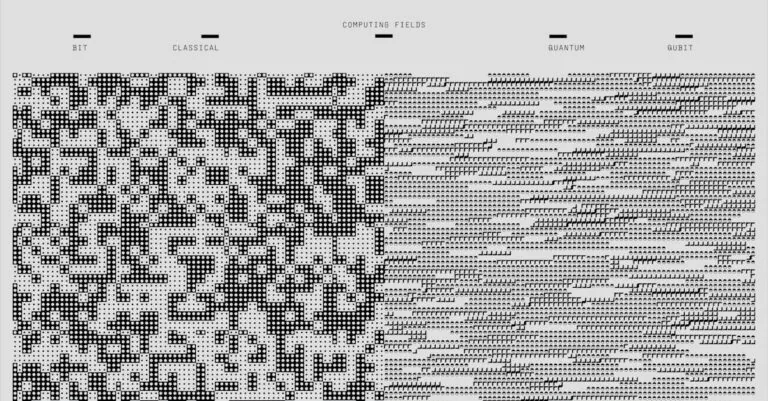In a world where data breaches make headlines faster than a cat video goes viral, understanding HIPAA security rules is more crucial than ever. These regulations aren’t just a bunch of legal jargon; they’re the shield protecting patient information from the digital Wild West. Imagine a superhero cape for healthcare data—only less flashy and more about keeping your secrets safe.
Navigating HIPAA can feel like trying to solve a Rubik’s cube blindfolded, but it doesn’t have to be that way. With the right knowledge, healthcare providers can ensure compliance while keeping their sanity intact. So buckle up as we dive into the essentials of HIPAA security rules, and discover how to safeguard your practice—and your patients’ privacy—without losing your sense of humor.
Table of Contents
ToggleOverview of HIPAA Security Rules
HIPAA security rules establish national standards to protect electronic protected health information (ePHI). These regulations apply to healthcare providers, health plans, and business associates that handle this sensitive data. Security standards divide into three main categories: administrative safeguards, physical safeguards, and technical safeguards.
Administrative safeguards encompass policies and procedures that manage the selection, development, and implementation of security measures. They require risk analysis to identify potential vulnerabilities and the creation of workforce training programs to promote data security awareness. Organizations must also establish contingency plans for potential data breaches.
Physical safeguards address access to facilities and equipment housing ePHI. These include security measures such as facility access controls, workstation security protocols, and device and media controls to protect physical assets. Implementing surveillance and access control systems can further enhance data protection.
Technical safeguards protect ePHI through technology. Encryption serves as a primary method for securing data during transmission and storage. Access controls play a critical role, ensuring only authorized individuals can access sensitive data. Audit controls effectively monitor and log access to ePHI, providing insights into user activities.
Compliance with HIPAA security rules is crucial for healthcare organizations. Regular assessments help maintain compliance and address emerging threats. Adapting to changes in technology or data handling practices strengthens overall security. By understanding and implementing these rules, organizations can better protect patient information while fostering trust in their services.
Key Components of HIPAA Security Rules

Understanding the key components of HIPAA security rules is essential for maintaining the confidentiality and integrity of patient information. The rules consist of administrative, physical, and technical safeguards, each playing a critical role in protecting electronic protected health information (ePHI).
Administrative Safeguards
Administrative safeguards encompass policies and procedures designed to manage security measures. They include conducting risk analyses to identify vulnerabilities in handling ePHI. Workforce training also falls under this category, ensuring employees understand their role in maintaining data security. Organizations need to implement contingency planning for emergencies and data breaches, preparing them to respond effectively. Regular evaluations of these safeguards facilitate compliance and adapt to new security challenges.
Physical Safeguards
Physical safeguards address access control to facilities and equipment containing ePHI. Key strategies include securing physical locations with locks and surveillance systems, which deter unauthorized access. Implementing visitor control processes aids in monitoring who enters and exits areas where ePHI is stored. Organizations must also consider environmental controls, like fire protection and temperature regulation, to protect data storage devices. Routine assessments of physical security measures help maintain a safe environment for sensitive information.
Technical Safeguards
Technical safeguards utilize technology to secure ePHI from unauthorized access and breaches. Encryption becomes essential for protecting data during transmission and storage. Employing access controls prevents unauthorized personnel from accessing sensitive information, allowing only authorized users to view or manipulate data. Audit controls track access and modifications to ePHI, enhancing accountability within organizations. Regular updates to security protocols ensure that technical safeguards adapt to evolving threats, maintaining robust protection for patient information.
Compliance Requirements
Compliance with HIPAA security rules is essential for safeguarding electronic protected health information (ePHI). Organizations must implement specific measures to meet these requirements.
Risk Assessment
Conducting a thorough risk assessment forms the foundation of HIPAA compliance. Identifying potential vulnerabilities in systems and processes helps organizations address gaps effectively. Evaluating risks associated with ePHI involves analyzing the likelihood and impact of potential threats. Regular assessments allow organizations to update their policies in response to changing security landscapes. Documenting findings creates clear action plans to mitigate identified risks.
Training and Awareness
Implementing comprehensive training programs enhances workforce knowledge of HIPAA regulations. Employees must understand their roles in protecting ePHI and the importance of compliance. Regular training sessions keep staff informed about evolving security threats and appropriate response measures. Fostering a culture of awareness within the organization promotes accountability and vigilance among all employees. Continuous education ensures that personnel are equipped to handle sensitive data securely.
Consequences of Non-Compliance
Non-compliance with HIPAA security rules can lead to severe consequences for healthcare organizations. Organizations face hefty fines, with the U.S. Department of Health and Human Services establishing penalties ranging from $100 to $50,000 per violation, depending on the severity and duration of the breach. Liability can increase if negligence is proven, adding financial strain to the organization.
Reputational damage also occurs due to public disclosure of security breaches. Patients may lose trust in healthcare providers, prompting them to seek alternative options for their care. Maintaining a strong reputation is vital for organizations aiming to retain and attract patients.
Legal repercussions include potential lawsuits from affected individuals. Individuals might hold organizations accountable for unauthorized access to their personal health information. These lawsuits can result in significant costs, including legal fees and settlements, compounding the financial impact of non-compliance.
Compliance violations can also lead to increased scrutiny from regulatory bodies. Organizations may face audits and investigations, straining resources and diverting attention from essential operations. Ongoing monitoring may become necessary to rebuild trust with regulators and the public.
Failure to adhere to HIPAA security rules can hinder an organization’s ability to participate in federal healthcare programs. Non-compliance may lead to the loss of Medicare and Medicaid reimbursement, significantly impacting operational viability.
The consequences of non-compliance include hefty fines, reputational damage, legal repercussions, heightened scrutiny, and potential exclusion from essential federal programs. Recognizing these risks underscores the importance of adhering to HIPAA security rules to protect both organizations and patients.
Best Practices for Implementation
Implementing HIPAA security rules requires attention to detail in several key areas. Focus on administrative safeguards, ensuring policies reflect current security measures and risk assessments. Conduct regular workforce training sessions to familiarize staff with their responsibilities regarding electronic protected health information (ePHI). Build contingency plans into organizational processes, addressing emergency scenarios to maintain data integrity.
Physical safeguards are also essential. Secure all facilities with locks and surveillance systems to restrict access to areas housing ePHI. Establish visitor control processes that prevent unauthorized access while ensuring that data storage devices have proper environmental controls to mitigate damage from external factors.
Technical safeguards play a critical role in preserving data safety. Utilize encryption technologies to protect sensitive information during transmission and storage. Implement robust access controls that mandate authentication for users accessing ePHI, creating audit controls to ensure accountability. Regularly update security protocols to adapt to evolving technological threats.
Regular assessments of compliance with HIPAA security rules maintain ongoing protection. Schedule thorough evaluations to identify system vulnerabilities and document findings accurately. Create action plans to address identified weaknesses, minimizing risk exposure.
A comprehensive training program promotes a culture of awareness and accountability. Employees should understand their roles in safeguarding ePHI through practical training focused on compliance and security best practices. Foster an environment where staff feels empowered to report suspicious activities proactively.
Understanding the potential consequences of non-compliance informs the prioritization of these practices. Penalties can reach up to $50,000 per violation, making adherence vital for both operational viability and patient trust. Emphasizing the importance of these best practices supports a robust security framework for healthcare organizations.
Understanding and implementing HIPAA security rules is vital for any healthcare organization. These regulations not only protect sensitive patient information but also help maintain trust in the healthcare system. By prioritizing compliance and fostering a culture of security awareness, organizations can minimize risks and safeguard against data breaches.
Regular training and assessments ensure that staff remain informed and prepared to handle ePHI responsibly. As the landscape of healthcare continues to evolve, staying ahead of potential threats through proactive measures is essential. Ultimately, adherence to HIPAA security rules is a commitment to both patient safety and organizational integrity.






